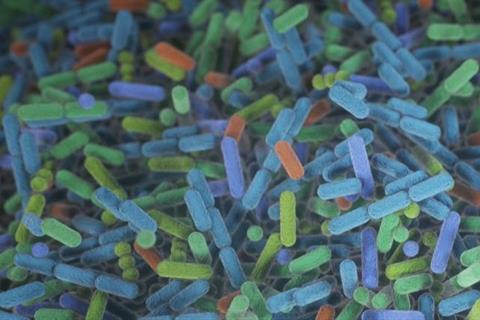The gut microbiome, also known as the gut flora, is essential for health. This complex and dynamic community of microorganisms is governed by numerous chemical interactions between the microorganisms themselves and with their host.

The perception of nutrients and signaling molecules by gut bacteria is thus crucial for these interactions, yet the wide repertoire of signals recognized by bacterial receptors remains largely unknown.
READ MORE: Gut microbes may help in recognizing and treating pancreatic cancer
READ MORE: Missing gut microbes could be the reason why sugar-free candy may give you gas
Research on the sensory abilities of bacteria has so far mainly focused on model organisms, particularly pathogens. But what signals do the sensors of so-called commensals, non-pathogenic or even beneficial bacteria that live in humans, ‘read’?
An international team led by Victor Sourjik, which included researchers from the Max Planck Institute for Terrestrial Microbiology, the University of Ohio and the Philipps-University Marburg, has now shown that commensal bacteria can perceive and respond to diverse chemical stimuli in their environment. They focused on Clostridia, motile bacteria that are present in large numbers in the intestinal flora and play an important role in maintaining gut health.
Broad spectrum
The researchers discovered that the receptors derived from the human gut microbiome recognize a surprisingly broad spectrum of metabolic substances. These include the breakdown products of carbohydrates, fats, proteins, DNA, and amines. Systematic screening revealed clear preferences for particular classes of chemicals, which differ between types of the bacterial sensors.
Using a combination of experimental and bioinformatic methods, the researchers identified multiple specific chemical ligands for sensory receptors that control the movement of motile bacteria. They observed that these sensors are used by bacteria to detect nutritionally valuable chemicals, suggesting that finding sources of nutrients is the key function of motility in these bacteria. Their results showed that lactic acid (lactate) and formic acid (formate) are the most common stimuli and may thus serve as particularly important nutrients for bacterial growth in the gut.
Significance of cross-feeding
The fact that these compounds can also be produced by some gut bacteria underlines the significance of ‘cross-feeding’, a process where one bacterial species releases metabolites that feed other species.
“These domains appear to be important for interactions between bacteria in the gut and could play a key role in the healthy human microbiome,” explains Wenhao Xu, a postdoctoral researcher in Victor Sourjik’s research group and the study’s first author.
By systematically assessing specificities of multiple sensors, the researchers discovered several previously unknown groups of sensory domains specific for lactate, dicarboxylic acids, uracil (a RNA building block) and short-chain fatty acids (SCFAs).
Dual sensor
They also succeeded in elucidating the crystal structure of a novel dual sensor of uracil and acetate with its ligands, thereby deciphering their binding mechanism. This sensor belongs to a large class of sensory domains with diverse specificities, and the analysis of the evolutionary relationship between uracil sensors and other sensors belonging to this class revealed remarkable ease with which their ligand specificity changes over the course of evolution. This highlights the adaptability of sensory receptors in response to changes in the bacterial environmental niche.
”Our research project has significantly expanded the understanding of sensory abilities of beneficial gut bacteria,” says Victor Sourjik. “To our knowledge, this is the first systematic analysis of the sensory preferences of non-model bacteria that colonise a specific ecological niche. Looking ahead, our approach can be similarly applied to systematically investigate sensory preferences in other microbial ecosystems.”
The study is published in Proceedings of the National Academy of Sciences.







No comments yet